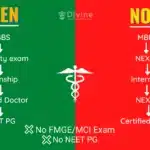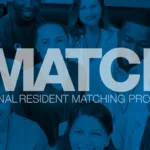Embarking on the journey from an International Medical Graduate (IMG) to a resident doctor in the USA involves a multifaceted process that includes passing the United States Medical Licensing Examination (USMLE), gaining clinical experience, and navigating the complexities of residency applications. This guide provides a comprehensive overview for IMGs, particularly those from India, to understand the pathways, requirements, and strategic planning necessary to advance their medical careers in the US healthcare system.
Key Takeaways
- IMGs must prepare early and consistently for the USMLE, integrating exam prep with medical curricula to ensure success as independent practitioners.
- Clinical rotations and research in the US are pivotal for hands-on experience and building a network, which is crucial for residency applications.
- Choosing between the USMLE route and Fast Track MD Program depends on the IMG’s long-term career goals and available resources.
- Financial and academic planning are essential for Indian MBBS graduates, with eligibility and admissions requiring strategic navigation.
- Understanding residency requirements, targeting IMG-friendly programs, and assessing match chances are key to maximizing success in US residency.
Understanding the USMLE Journey for IMGs

The Importance of Early and Consistent Exam Preparation
For International Medical Graduates (IMGs), early and consistent preparation for the United States Medical Licensing Examination (USMLE) is crucial. High USMLE scores are pivotal in securing a residency spot, as many programs use these scores to filter applicants. A structured approach to exam preparation can significantly enhance your performance and prospects.
- Year 2: Take USMLE Step 1
- Year 3: Clinical rotations and preparation for USMLE Step 2
- Year 4: Take USMLE Step 2
- Residency: Take USMLE Step 3 after the first year
Integrating USMLE preparation with medical school curricula not only prepares students for the exams but also for their future roles as independent practitioners.
Medical schools in the USA often provide comprehensive support for USMLE preparation, including access to resources, practice exams, and faculty guidance. This support is designed to ensure that students meet the high standards of the medical profession in the United States. To maximize success, it is essential to leverage these resources and plan strategically, avoiding delays and enhancing your chances of acceptance into a residency program.
Structured Support Systems in US Medical Schools
The journey to becoming a licensed physician in the United States is a multifaceted process that requires not only academic excellence but also a well-structured support system. US medical schools recognize the importance of this support and have developed comprehensive programs to assist International Medical Graduates (IMGs) in their USMLE preparation and overall medical education.
- USMLE Support: Guidance from the university to crack the USMLE.
- Clinical Experience: Hands-on experience through clinical rotations.
- Research Opportunities: Access to research courses and mentorship.
Medical schools in the USA offer a variety of resources, including practice exams, access to faculty with experience in the USMLE process, and structured clinical rotations. These resources are designed to ensure that students are well-prepared for the USMLE and their future medical careers.
Strategic planning is essential at this stage to avoid delays and maximize your chances of acceptance. The support provided by medical schools is crucial in navigating the complexities of the USMLE and securing a successful medical career in the USA.
Navigating USMLE Steps 1, 2, and 3
The journey to practicing medicine in the USA for International Medical Graduates (IMGs) is marked by the successful completion of the United States Medical Licensing Examination (USMLE) Steps 1, 2, and 3. Scoring highly on these exams is crucial, as many residency programs use these scores to filter applicants. A strategic approach to these exams can significantly enhance an IMG’s residency application.
- USMLE Step 1: Focuses on basic medical sciences and is typically taken after the second year of medical school.
- USMLE Step 2: Divided into Clinical Knowledge (CK) and Clinical Skills (CS), it assesses the ability to apply medical knowledge and understanding of clinical science necessary for patient care.
- USMLE Step 3: Taken during residency, it evaluates the ability to practice medicine unsupervised.
Early and consistent preparation, integrated with medical school curricula, is essential for success. This approach not only prepares students for the exams but also for their future roles as independent practitioners.
The table below outlines the recommended timeline for taking these exams:
| Year | Exam |
|---|---|
| Year 2 | USMLE Step 1 |
| Year 3 | Clinical rotations & USMLE Step 2 preparation |
| Year 4 | USMLE Step 2 |
| Residency | USMLE Step 3 after the first year |
It is important to note that eligibility for the USMLE requires a medical degree from an institution listed in the World Directory of Medical Schools. Additionally, clinical rotations in the US are highly beneficial, providing exposure to the US healthcare system and enhancing the competitiveness of your residency application.
Gaining Clinical Experience and Research Opportunities in the USA

The Role of Clinical Rotations in Medical Education
Clinical rotations are a cornerstone of medical education, providing invaluable hands-on experience in a variety of healthcare settings. Engaging in clinical rotations in the U.S. acquaints IMGs with the country’s medical culture, including patient-physician interactions and teamwork among healthcare professionals. These experiences are essential for smoothly transitioning into a residency program.
U.S. clinical exposure is highly favored by residency programs as it demonstrates an IMG’s familiarity with the U.S. healthcare system, its workflows, and standards of care. Clinical rotations often serve as an extended interview, allowing program directors to evaluate a student’s clinical abilities and work ethic.
Completing rotations in the U.S. also provides opportunities to obtain strong letters of recommendation from U.S. physicians, which are highly valued during the residency application process.
Moreover, clinical rotations are excellent platforms for networking with physicians, residents, and other medical students, creating connections that can be invaluable for securing residency interviews and future collaborations in your medical career.
Maximizing Research Opportunities for Career Advancement
For Indian MBBS graduates aiming for a medical career in the USA, gaining research experience is a pivotal step in enhancing residency applications. Research not only showcases your commitment to the medical field but also provides a platform for acquiring U.S. Letters of Recommendation (LORs), which are crucial for a successful Match. Engaging in research projects can lead to networking opportunities with professionals who can guide and support your career trajectory.
- Benefits of Research Experience:
- Enhanced competitiveness for residency programs
- Networking with mentors and peers
- Acquisition of U.S. LORs
- Exposure to U.S. medical culture and advanced technology
Strategic planning and early involvement in research can significantly boost your profile, making you a more attractive candidate to residency programs.
Securing research opportunities often requires proactive efforts, such as reaching out to program directors and current residents. This not only helps in standing out as a candidate but also provides insights into the program and may lead to observerships or other clinical experiences. Remember, a robust academic record with a focus on research contributions can be the key to unlocking doors in competitive residency programs.
Strategies for Securing US Clinical Experience
Securing US clinical experience is a pivotal step for International Medical Graduates (IMGs) aiming to practice in the United States. Electives at US medical schools provide the most valuable type of clinical experience, including clerkships, externships, and sub-internships. These can often be arranged during the final year of medical school, especially if there are existing affiliations between your institution and US schools.
To enhance your application’s competitiveness for residency, consider the following steps:
- Research and identify clinical rotation opportunities that align with your desired specialty and career goals.
- Engage in rotations near your preferred practice location to build relevant connections.
- Obtain strong Letters of Recommendation (LORs) from US or Canadian physicians.
- Aim for a USMLE Step 1 score above 250 to stand out.
Tailoring your applications and strategically planning your clinical rotations are key for success in the competitive landscape of US medical residency.
Remember, clinical rotations are not just about gaining experience; they’re also an opportunity to network with healthcare professionals and to demonstrate your clinical competence and adaptability to the US healthcare system. These experiences can serve as compelling talking points during residency interviews and provide a deeper understanding of the US medical culture.
Pathways to US Residency: USMLE Route vs. Fast Track MD Program

Comparing the USMLE Route and Fast Track MD Program
International Medical Graduates (IMGs) often face a pivotal decision in their journey to practice medicine in the USA: choosing between the USMLE route and the Fast Track MD Program. Each pathway has distinct features that cater to different career aspirations and resources.
The USMLE route demands rigorous self-preparation, with a focus on passing the USMLE Steps 1 and 2 to secure a residency match. This traditional path is known for its high competition and the necessity for US clinical rotations and strong Letters of Recommendation (LORs) from US hospitals.
In contrast, the Fast Track MD Program is an accelerated option, typically a 2.5-year pathway that includes USMLE Step 1 preparation and clinical rotations in the USA. This program is designed to streamline the transition to residency, offering structured support and potentially stronger LORs due to the integrated clinical experience.
Careful consideration of one’s career goals and resources is essential when choosing between these pathways, as each offers distinct advantages and challenges.
Here’s a brief comparison of the two options:
- USMLE Route: High competition, requires US clinical rotations, and LORs from US hospitals.
- Fast Track MD Program: Shorter duration, includes USMLE prep and clinical rotations, potentially stronger LORs.
Aligning Pathway Choice with Long-Term Career Goals
Choosing the right pathway to US residency is a decision that should be closely aligned with your long-term career goals. Strategically plan your journey from USMLE to residency for MD dreams in America. Consider the USMLE route, known for its high competition, or the Fast Track MD Program tailored for international students.
The pathway you select will significantly influence your medical career trajectory and the opportunities available to you.
Here are some factors to consider when aligning your pathway choice with your career aspirations:
- USMLE Route: Offers a traditional approach with a focus on passing the USMLE Steps 1 and 2, followed by securing a residency match in the US.
- Fast Track MD Program: A 4-year program that includes theoretical sciences and clinical rotations in the US, potentially simplifying the residency match process.
Each pathway has its own set of advantages and challenges. It is crucial to assess how each aligns with your career objectives, resources, and the lifestyle you envision as a medical professional in the USA.
Building a Professional Network and Securing LORs
Building a robust professional network and securing strong Letters of Recommendation (LORs) are pivotal steps for International Medical Graduates (IMGs) aiming for a residency in the USA. Networking with peers, mentors, and professionals in your desired specialty can open doors to valuable opportunities and provide insights into the residency application process. It’s essential to connect with IMGs from other medical schools, as they can share experiences and strategies that may benefit your journey.
When it comes to LORs, they are one of the highest-impact elements of your residency application, second only to your USMLE scores. Aim to obtain at least one letter of reference in your chosen specialty, with two being ideal. Your letter writers should be able to attest to your suitability and proven track record in the specialty you are pursuing. Approach potential referees in a polite and friendly manner, providing tangible examples of your clinical competence and dedication.
For those who face challenges in finding referees, consider learning how to write your own LOR, which can then be signed by a close connection in the US or Canada. This strategy, while not conventional, can be a practical solution in certain situations.
Lastly, remember that clinical rotation experience in the U.S. not only enhances your application’s competitiveness but also demonstrates your familiarity with the U.S. healthcare system, which is highly valued by residency programs.
Financial and Academic Considerations for Indian MBBS Graduates

Managing the Costs of US Medical Education
The financial aspect of pursuing a medical education in the USA is a significant consideration for Indian MBBS graduates. Understanding the spectrum of costs associated with US medical schools is crucial for effective financial planning. The pre-medical undergraduate program alone can range from $20,000 to a staggering $60,000 per year.
Financial Planning Tips:
- Research scholarship and financial aid options.
- Consider cost-effective pathways, such as Fast Track MD programs.
- Budget for additional expenses, including living costs and exam fees.
While the initial investment may seem daunting, strategic financial planning can pave the way for a successful medical career in the USA. It’s essential to explore all available resources and plan ahead to manage the financial burden.
The tuition fees for a comprehensive 6-semester program, which includes USMLE Step 1 preparation and clinical rotations, start at 60 Lakhs INR, excluding living costs and other additional expenses. This pathway is often more affordable than traditional routes, offering a viable option for those concerned with the high costs of medical education.
Strategic Academic Planning for a Smooth Transition
For Indian MBBS graduates, the transition to a US MD program is a pivotal step in their medical career. Strategic planning is essential for Indian students transitioning from MBBS to MD in the USA. Academic alignment, financial management, and USMLE preparation are key for success. The process involves a comprehensive understanding of the educational pathway, careful financial management, and a clear grasp of the USMLE requirements.
Eligibility Criteria: Ensure you meet the academic and language proficiency requirements. A strong foundation in science and English proficiency tests like TOEFL or IELTS are often mandatory.
-
Pre-medical Coursework:* Complete the necessary pre-medical courses, which may include subjects like biology, chemistry, and physics.
-
Standardized Tests:* Prepare for and take exams such as the MCAT, which is a critical component of the application process.
-
Clinical Experience:* Gain clinical exposure, which can be a significant advantage during the application process.
-
Financial Planning:* Understand the costs involved and explore scholarship and funding options to manage the financial burden.
The transition from MBBS to MD involves not only academic preparation but also adapting to a new educational and cultural environment. Proactive research and networking with professionals who have successfully made this transition can provide invaluable insights.
Eligibility and Admission Process for US MD Programs
For Indian MBBS graduates aspiring to pursue an MD in the USA, understanding the eligibility and admission process is critical. A strong foundation in science subjects, evidenced by 12th-grade results, is essential. Additionally, proficiency in English is a prerequisite, often validated by standardized tests such as TOEFL or IELTS.
The admission process for MD programs in the USA is highly competitive, focusing on academic excellence and a well-rounded profile. It is imperative for students to begin early preparation and familiarize themselves with the specific requirements of their chosen universities. Here are some steps to consider for a smooth transition:
- Ensure you meet the academic and language proficiency requirements.
- Complete necessary pre-medical coursework, which may include subjects like biology, chemistry, and physics.
- Prepare for and take exams such as the MCAT, a critical component of the application process.
- Gain clinical exposure, which can be a significant advantage during the application process.
- Understand the costs involved and explore scholarship and funding options to manage the financial burden.
The transition from MBBS to MD involves not only academic preparation but also adapting to a new educational and cultural environment. Proactive research and networking with professionals who have successfully made this transition can provide invaluable insights.
It is also important to be aware of the USMLE Steps 1 and 2, as passing these exams is a prerequisite for medical licensure in the USA. Indian students should aim to secure strong Letters of Recommendation and build a well-rounded profile to enhance their residency match chances.
Navigating Challenges and Maximizing Success in US Medical Residency

Understanding Residency Program Requirements
For International Medical Graduates (IMGs), comprehending the residency program requirements in the USA is a critical step towards a successful medical career. Each residency program has its own set of criteria, which often includes ECFMG certification, US state medical board requirements, specific residency program stipulations, and US visa prerequisites. It is essential to consult the World Directory of Medical Schools to verify your medical school’s eligibility for US residency matching, as all programs necessitate ECFMG certification.
Residency programs may also specify preferences such as recent medical school graduation, a certain number of USMLE attempts, and types of visas accepted. Clinical experience, while not always mandatory, is highly regarded and can significantly bolster your application. To ensure you meet all the necessary qualifications, here is a list of common requirements:
- ECFMG certification
- Passing USMLE Steps 1 and 2
- Medical school graduation year
- Visa type and sponsorship
- Clinical experience in the US
Aligning your qualifications with the residency program’s requirements is vital for a smooth application process. Early verification of these criteria can save you time and help tailor your application to increase your chances of acceptance.
Tips for Matching to IMG-Friendly Residency Programs
Securing a residency position in the United States is a competitive process, especially for International Medical Graduates (IMGs). Crafting a standout application is crucial for increasing your chances of matching with an IMG-friendly program. Here are some actionable tips:
- Demonstrate commitment to your chosen specialty through relevant clinical experience and research.
- Tailor your application to highlight your strengths and alignment with the program’s values and goals.
- Understand the program’s history with IMGs and their success rates to better assess your fit.
Networking plays a significant role in the residency application process. Building relationships with mentors and securing strong Letters of Recommendation (LORs) from US-based clinicians can greatly enhance your application. It’s also beneficial to participate in clinical rotations within the US to gain familiarity with the healthcare system and to showcase your clinical skills.
When creating your residency rank order list (ROL), prioritize programs with a track record of IMG acceptance. This strategic approach can optimize your chances of matching.
Finally, be mindful of the application timeline and ensure all components of your application, including USMLE scores, LORs, and the Electronic Residency Application Service (ERAS) application, are completed and submitted promptly.
Assessing Match Chances and Specialty Selection for IMGs
For International Medical Graduates (IMGs), assessing match chances and selecting the right specialty are pivotal steps in the journey toward US residency. The match rate for foreign IMGs in the US is approximately 58.1%, indicating a competitive landscape. Specialties that historically have higher match rates for IMGs can be strategic choices. It’s crucial to understand that residency matches are categorized into three pools: US citizen graduates of US or Canadian medical schools, US citizen IMGs, and Foreign National IMGs.
To enhance match prospects, IMGs should focus on obtaining a strong USMLE Step 1 score. For instance, a score above 250 significantly boosts the likelihood of matching, jumping from a 51% chance to an impressive 89%. Additionally, gaining clinical experience in the US healthcare system and securing strong Letters of Recommendation (LORs) from US-based clinicians are essential.
The pathway to US residency for IMGs requires careful planning and a well-rounded application. Strategic steps include excelling in USMLE exams, gaining relevant clinical experience, and fostering a robust professional network.
Finally, consider the following steps to improve your match chances:
- Aim for high USMLE Step 1 and Step 2 scores
- Acquire US clinical experience
- Secure strong LORs
- Build a professional network
- Select IMG-friendly specialties
Embarking on a medical residency in the US can be a complex journey, but with the right guidance, it’s a path filled with immense opportunities for success. At Divine Education Abroad Consultancy, we specialize in navigating students through the Fast-Track MD Pathway, ensuring a higher success rate without the need for MCAT or NEET. Our tailored approach offers a 5-Year Medical Program with a 100% Admission Guarantee, making your dream of becoming a US-qualified doctor a reality. Don’t let common aspirant mistakes hold you back. Take the first step towards a rewarding medical career by visiting our website and discovering how we can help you maximize your success in the US medical residency.
Conclusion
In conclusion, the journey to securing a residency for International Medical Graduates (IMGs) in the USA is a challenging but achievable goal. It requires a strategic approach, thorough preparation for USMLE exams, and a deep understanding of the US healthcare system. Gaining clinical experience through rotations and building a strong professional network are pivotal steps. The choice between the USMLE route and Fast Track MD Program must align with long-term career aspirations and available resources. Despite the hurdles, such as high competition, financial burden, and cultural adjustments, IMGs can successfully navigate the process with meticulous planning and determination. Ultimately, the pursuit of an MD in the USA offers a pathway to global recognition and a fulfilling medical career.
Frequently Asked Questions
What are the key steps for an Indian student’s transition from MBBS to MD in the USA?
The key steps include meeting academic and language proficiency requirements, completing necessary pre-medical coursework, preparing for and taking the MCAT, gaining clinical experience, and financial planning. Passing USMLE Steps 1 and 2 is also crucial for medical licensure in the USA.
What are the main pathways for Indian MBBS graduates to pursue residency in the USA?
The main pathways are the USMLE route, which involves passing the USMLE Steps 1 and 2 followed by securing a residency match, and the Fast Track MD Program, a 4-year program designed for international students that includes clinical rotations in the US.
How important is US clinical experience for IMGs seeking residency in the USA?
US clinical experience is vital as it demonstrates familiarity with the US healthcare system and can enhance competitiveness for residency positions. It also provides networking opportunities and exposure to the medical culture and advanced technology in the USA.
What are some challenges Indian MBBS graduates face when applying for US residency programs?
Challenges include high competition for admission, complex admission processes, financial burden, visa and immigration policy compliance, cultural and educational adjustments, and career path uncertainty.
What factors should IMGs consider when choosing between USMLE and Fast Track MD Program?
Factors include long-term career goals, the resources at disposal, the time investment, educational structure, potential for global practice, and the strategic advantages each path offers.
Why is strategic academic planning important for Indian students pursuing an MD in the USA?
Strategic academic planning is important to navigate the complexities of the US medical education system, manage the financial burden, and maximize the chances of a successful transition and residency match.














